The Tushar Mountains is the third highest mountain range in Utah behind the Uintas and the La Sals. These mountains are mostly unknown to the running world because of their remote location. I had never visited them and looked forward to running the new race, Tushar 93K (57.8 miles). Because it was also my 57th birthday, I thought it would be appropriate to run 57 miles on my elderly birth anniversary to fool me into thinking that I’m still young. The Tushars are about 30 miles long and 20 miles wide in the Fishlake National Forest. Its highest mountain is Delano Peak, rising to 12,173 feet which would be the first of three peaks we would summit. Most visitors to the area are ATVers, who ride along the Paiute ATV trail, one of the longest in the country. We would run several miles on that route.
As I researched the race course a little, I knew this one would be very tough. The climbing along the way would be about 16,000 feet for those 57 miles and on some rough and technical trails at times. I had recently accomplished several very tough comparable runs so felt ready for the adventure. I set my expectations low as far as a finishing time and decided that I wouldn’t really race this one, and instead enjoy the mountains on my birthday. I would look at the sights and spend more time interacting with other runners. I knew that it would be fun but very tough.
When I studied the time allotted for finishing the race (19 hours), I was pretty sure this would be hard for nearly half of the runners to accomplish. This year the race time allotted was set up due to Forest Service requirements and resources needed to finish by midnight. The race briefing given by Matt Gunn only enforced in my mind how difficult and slow this adventure would be. I didn’t make any pacing charts, I only had one goal, to reach the 50-mile mark before dark (where my headlamp would be), which would ensure that I would finish the race in time. The cut-offs would be enforced strictly, so to finish, you had to keep moving strong.
We started at 5:00 a.m. with our bouncing headlamp lights. As people passed me down the initial road at the Eagle Point ski resort, I had to keep reminding myself that I wouldn’t be racing this one. If it really bugged me, I knew that I would be able to catch up and pass people. But I settled in at a solid, comfortable pace. We eventually left the ski resort and ran on a climbing single-track trail, up 800 feet, across a valley, and over a ridge at 11,000 feet. The altitude kept my pace in check, but also never bothered me because I had been running up high for the past couple months.
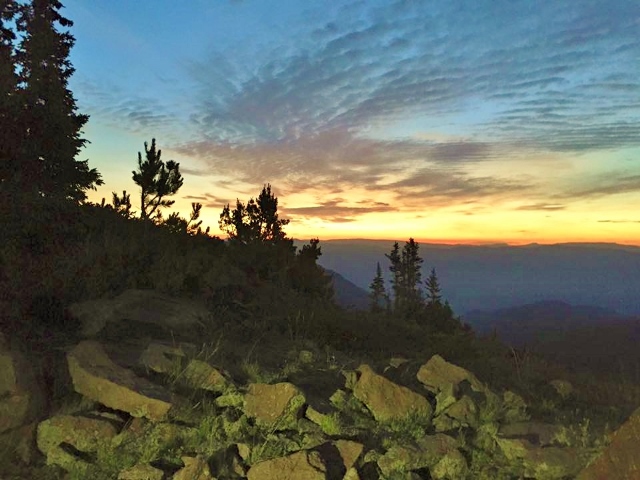
As the morning light appeared, we made a long traverse to the north, going around Mount Holly high above. We made some significant climbs and descents on some pretty technical trails. We connected to some old mining roads and arrived at Alunite Ridge aid station (mile 7.3) at 2:01. (I’m using my GPS mileage rather than the published course mileage. Mine was shorter and may be missing climbing mileage). We met a cheerful group of volunteers who were even cooking up bacon! (That tasted great!) I pondered about my time thus far. I was only 29 minutes ahead of the cutoff and I was pushing it pretty well. These cutoff times would indeed be tough!
Next up, I knew would be up and over a ridge and then a 2,000-foot climb to the top of Delano Peak (12,173 feet). We ran past old mining ruins all day and at times I wished I could stop and check them out, but instead kept going. As I began the climb in the forest, I became alarmed that the course markings were no longer being seen. I knew there had not been a junction since the last signs and flags and there were plenty of recent foot prints on this remote trail, so I continued on. Other runners would be running back down if it was wrong. But soon a woman runner ahead of me came running down the trail giving out alarms that there were no course flags ahead. I pointed out all the footprints but she kept running back down. I paused, started to follow her, but then convinced myself to trust my instincts. Other runners soon appeared below. They included Wasatch Mountain Wrangler friends. It was good to see them. We all continued on together and soon heard a yell from above that a flag had been found. Aaron Williams found it and we all were relieved, not seeing one for quite awhile. We all grouped together, about eight of us, and helped each other find flags and stay on the course.
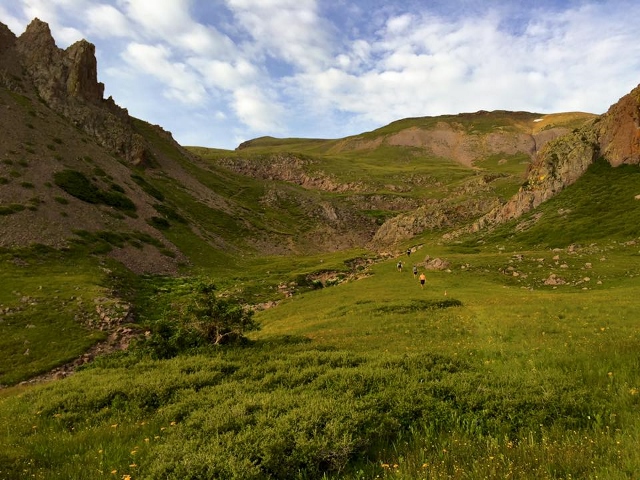
I’m included in this Ben Light video (brown shirt) as I joined in with the group for a while and then pushed ahead to the top.
It was fun to be with the group for a while, but once we were above the tree line, I was ready to push the uphill climb much harder, so I took the lead, wondering if anyone would try to keep up. It felt good to push the pace on the steep slopes of Mount Delano. Our group started to be scattered down the trail as I could tell the altitude was slowing them. On the final push up to the summit I could hear the antics of Aaron Williams far below. But then I was surprised that a wildcard runner caught up fast and passed me. It was buddy Paul Grimm from Colorado who knew a thing or two about altitude. We reached the summit together and I next did my best to keep up with him on the steep descent down the other side.
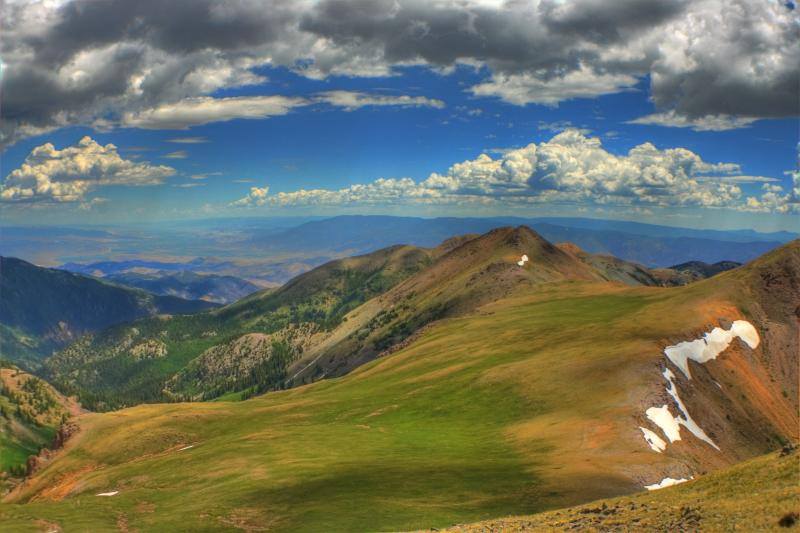
The leaders of the half-marathon race appeared on the other side as they made their push to the summit. A few would also later pass me on the way back down and call out greetings on their descent. After the rugged descent, mostly without a defined trail, we finally spilled out on the wide Paiute ATV trail. That was a relief on the legs. Paul pushed the pace ahead and I knew I couldn’t keep up, but we greeted each other at the Mud Lake aid station (mile 14.9) where I arrived at 4:22, just 53 minutes ahead of the cutoff. Veteran runner, Quin Barney would miss this cutoff and be pulled from the race. They were very serious about enforcing cutoffs. I never worried about them, but also didn’t realize how close I was up against them.
After climbing up and over a ridge, I made a long descent into Blue Lake Valley. Finally at the canyon bottom, we had to climb back up the other side, another 1,300-foot climb. As I climbed, cramping started, including a sharp pain in the butt. Yes, this climb was literally a pain in the butt. My pace slowed significantly as I tried to pull out of it. I did discover that the pain would go away if I simply ran instead of hiked. I arrived at Bullion Pasture aid station (mile 21.6) at 6:30, now 1:15 ahead of cutoffs. Friends greeted me at this station and I took my sweet time, there joking and resting for a 10-minute break.
We passed by several signs about looking for mountain goats. I didn’t see any, but others did.
The next section puzzled me but I soon figured out that this was an out and back to go climb Copper Belt Peak. We first descended 1,000 feet into the valley and then would climb nearly 2,000 feet to the top of another peak. On the way down to the valley, I greeted the race leader who was about ten miles ahead of me. Wow! I guess I was going slowly. The run down the dirt road was fast and I arrived at Copper Belt Peak aid station (mile 24.3) at 7:12, now 1:33 minutes ahead of cutoffs. Sam and DJ were doing this aid station and they gave news of runners dropping out of the race and running friends just up ahead of me.
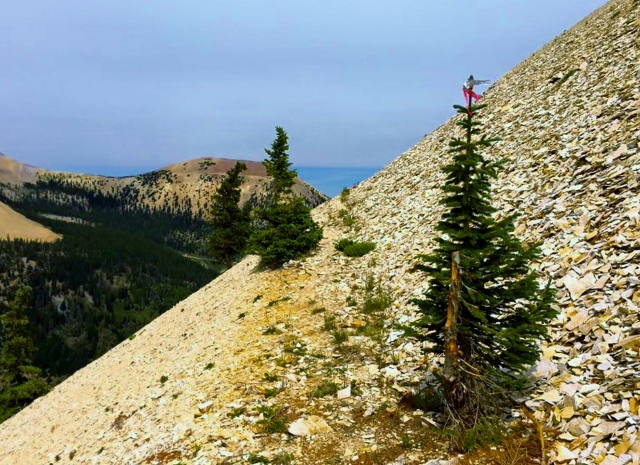
My stop was fast and I concentrated on the tough climb ahead. It was getting warmer and I was going through fluids fast, so I had to refill a bottle from a small stream coming down the mountain. The initial climb up was on some rough, old mining road switch backs. Runners ahead of me were coming down those and I could look down the slope and see runners following me. I loved the uphill and cranked up the speed. The Van Horns were taking pictures on a saddle and I pushed the speed even more. The trail made an impressive wrap around the mountain that was very fun to run on. Now able to see runners ahead, I pushed the pace even harder and almost caught up to two near the summit. The views were amazing.
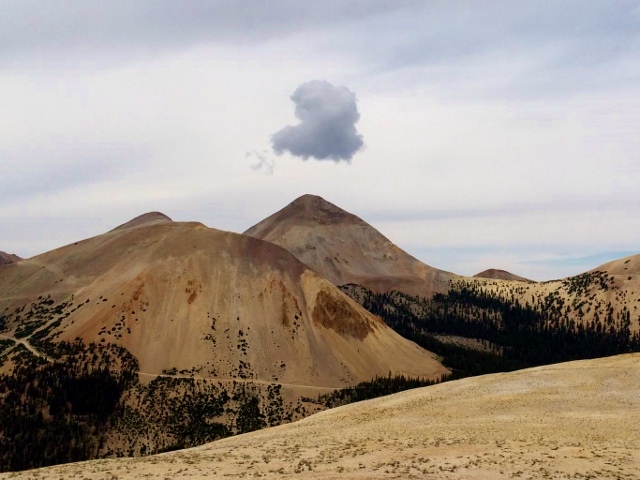
The run down was fast. I was able to again greet my Wasatch Mountain Wrangler friends and see how they were doing. On the switch-backs, trying to avoid a marshy area, I tripped and took a hard fall, barely avoiding slamming my face hard on a rock. But I did sprain a couple fingers and had a nice gash on my elbow. This slowed me down again and I stopped to clean up at the creek. I recovered fast and felt better when I returned to the Copper Belt Peak aid station (mile 32) at 9:03. (Wow, that is a slow and tough 50K time). I was puzzled that half way down the mountain I no longer saw any of the back-of-the-pack runners. I soon understood. They had missed cutoffs and were no longer in the race. I was 1:42 ahead of the cutoff.
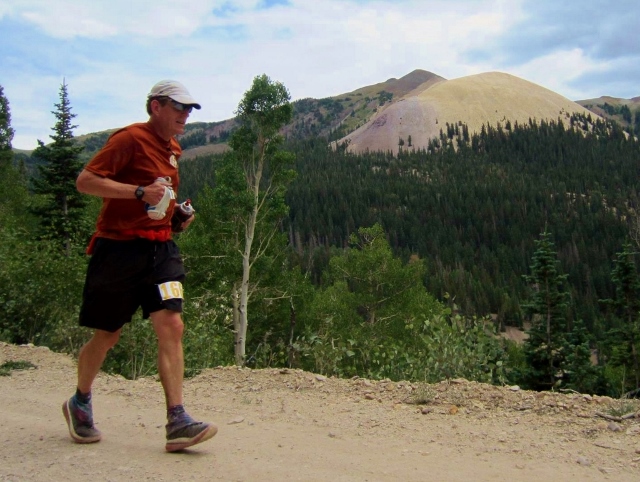
I ran the dirt road up 1,000 feet back to Bullion Pasture aid station admiring Copper Belt Peak along the way which I had just climbed. I reached the aid station (mile 34.6) at 9:53, 2:02 ahead of cutoffs. My stop was fast, I needed to keep moving. Next up was a nearly 4,000 feet descent over the next seven miles down Bullion Canyon. With all the downhills, my feet started to complain as a couple of blisters were starting. After a mile, I stopped to clean my feet and check things out. I would just have to deal with it, but my pace was suffering on the downhill. It reminded me of the rugged canyon descent after Tony Grove at Bear 100. With about a mile or so to go, the group of Wrangler friends caught up, all in good spirits. I was in the midst of a bad allergy attack at the time. The wildflowers down at this altitude were beautiful but were killing me making it really hard to breath at the time. I couldn’t quite keep up with the others, but kept them in my sights until we arrived at Miner’s Park (mile 41.3) at 12:23, 1:52 ahead of cutoffs.
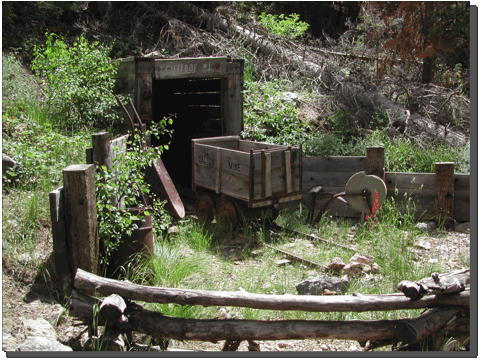
Jennilyn Eaton was pacing the Wrangler group and cracking the whip on them to leave the aid station quickly. I took the advice and left a couple minutes ahead of them. Next up was the toughest and longest climb of the race, up 4,000 feet to the summit of Mount Edna. It was time for me to push hard. I wasn’t going to let anyone catch up and pass me to the summit. I was worried that I wouldn’t reach the next aid station before dark, where my light was. That was an extra motivation.
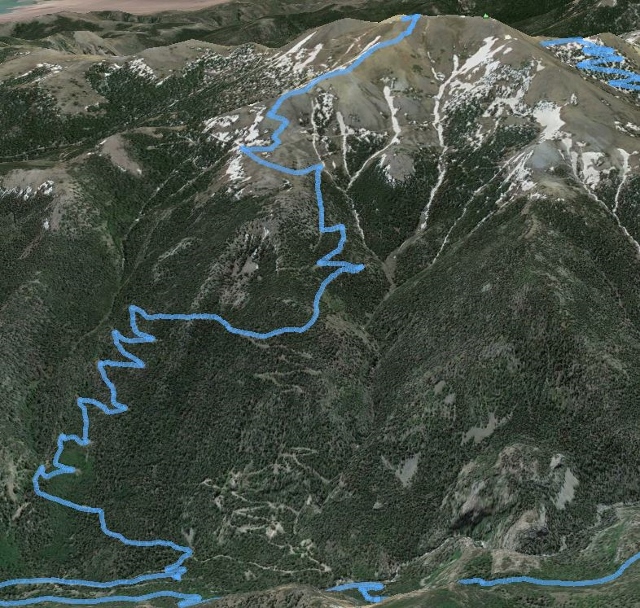
I climbed and climbed, up an old overgrown switch-back road that was never ending. While below the treeline, it had high grass as an obstacle. Thankfully the runners ahead had pounded down a nice trail through it. My pace was good and I would glance down and listen, realizing that I was pushing further ahead of the others. I was surprised to see two runners come toward me from above. Both had decided to go back and quit the race for some reason.
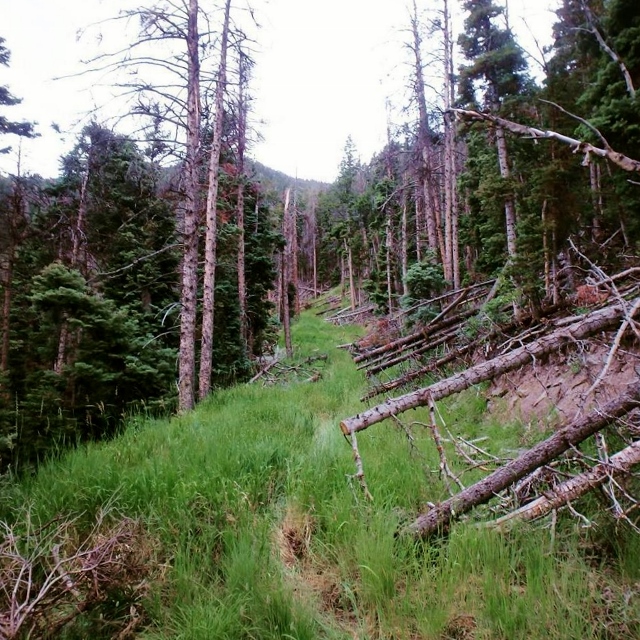
On ahead, I was surprised to see that I almost caught up to another runner. He saw me and I chuckled as I watched him for the next couple miles crank up his pace and keep looking back to see if I was catching up. At least I was able to help someone in some small way.
Above the tree line, we left the dirt road and next climbed straight up without a real trail and no switch backs. It was a bushwhack all the way to the top. Some runners behind me nearly caught up but I turned on the jets and by the time I reached the summit, they were far below and behind me.
I got a glimpse of a couple runners ahead, but I was now all alone as I descended down the other side and traversed across a valley back to Alunite Ridge aid station. I became confused and wondered if I was off course several times, would pause or run back some, but eventually slowly made it to the aid station (mile 47.9) at 15:22, 1:08 ahead of the cutoff. I was surprised to see Paul Grimm there who had slowed and was struggling on the downhills. I retrieved my light from my drop bag, now having everything I needed to finish this race.
As usual at this point in a race, my stomach started to shut down and complain. I painted some rocks with my aid station dinner and pushed on. I soon slowed significantly on the downhills from a painful blister. Dusk arrived and I found myself clumped in with a bunch of runners including some of the Wasatch Wrangler group. I just couldn’t push the downhill pace anymore, didn’t really care, and watched the lights ahead disappear.
I made a goof, missed a switchback and instead followed foot prints in the dark. I convinced myself that I goofed, returned to the last flag only wasting four minutes. As I continued on right in front of another runner, I was amazed that he was so focused, he didn’t follow my light on the correct trail and also made the same goof. I yelled down to him until he heard me over his head phones. It was Paul Grimm and he later thanked me for the correction. We made the final big climb together but he stopped at the top to rest.
The last miles were lonely, dark, and long. One runner (Ryan Bulkoski) caught up and passed me as we watched a couple of other lights, totally off course about a half mile away. I never figured out what they were doing. Navigation in a couple points in the dark was tough but I was able to figure things out. Finally I could tell that I was on ski resort property again, the finish was close. Lights appeared and it looked like there was a big party going on. As I crossed the finish line to cheers, everyone broke out into the Happy Birthday song. That really cheered me up and I was very glad to finally be back. I was somewhat embarrassed finishing so late and only putting up a medium effort. They had already eaten all the birthday cake because I was so slow to arrive. I finished in 18:31 (11:31 p.m.), in 36th place out of 78 starters. (For some reason they gave me bonus minutes, the official time is 18:19). Now at age 57, I was the oldest finisher.
That was quite a birthday adventure! That course was tough. If the race would have stopped at the 50-mile point, that would have been the toughest 50-miler I had ever raced. I was asked if I thought this was tougher than Kat’cina Mosa 100K, held the same day near home. My answer is that Tushars is far tougher. I’m just glad that they cancelled the 100-mile option for this race. That would have been a killer. How tough was this course? On my bodily system, it felt like I had finished a 100-miler. But I quickly recovered, feeling totally back in less than two days, so I know it wasn’t as tough as the usual 100-miler I run. But still, covering 55-57 miles in more than 18 hours, with 16,000 feet of climbing on many technical trails, shows that this 93K was very tough.
Would I do it again? Yes! I hope to return and try to race it for real. I expect that a 16-hour finish should be possible for me.
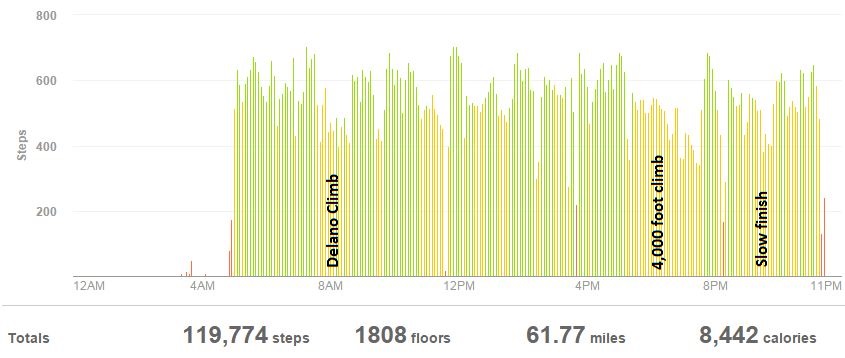



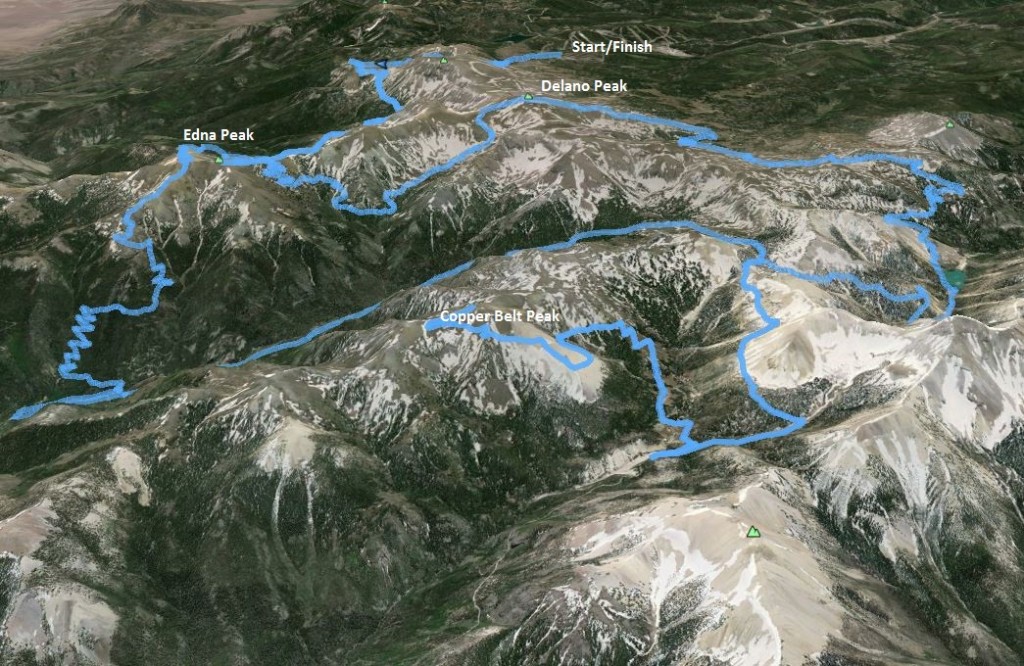
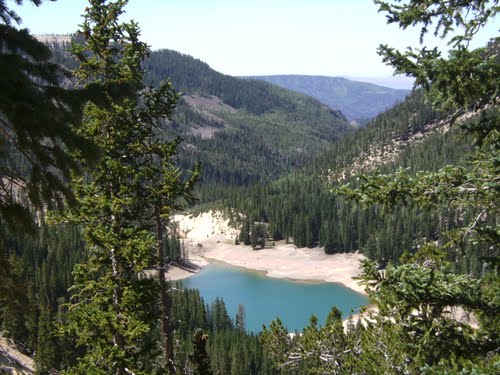


Great to see you and nice write-up Davy. And HBD!! I had no idea.
Wish I was at the finish with you. Lol. If there was ever a day to beat you, that was the day as you were still recovering from Capital Reef100. No chance thx to your strong running ability, plus my usual miss-execution, total lack of race course respect, taper, etc.
Run hard and healthy on your 57th year on Planet Ultra!!
Hi Davy!
I just re-read this year-old blog again, the day after my 2nd Tushar start and first DNF in 7-8 years (also my 1st DNF <100 miles, so my 100% sub-100mi finish rate in ~100 ultras is now broke!).
I failed to mention in last year's comment that I was the runner you saw race ahead of you on the 20+ switchbacks going up Mt Edna!! Sadly, I paid for that surge when my wheels came off after the final aid station. Lol and Happy 58th BDay in 2016!!